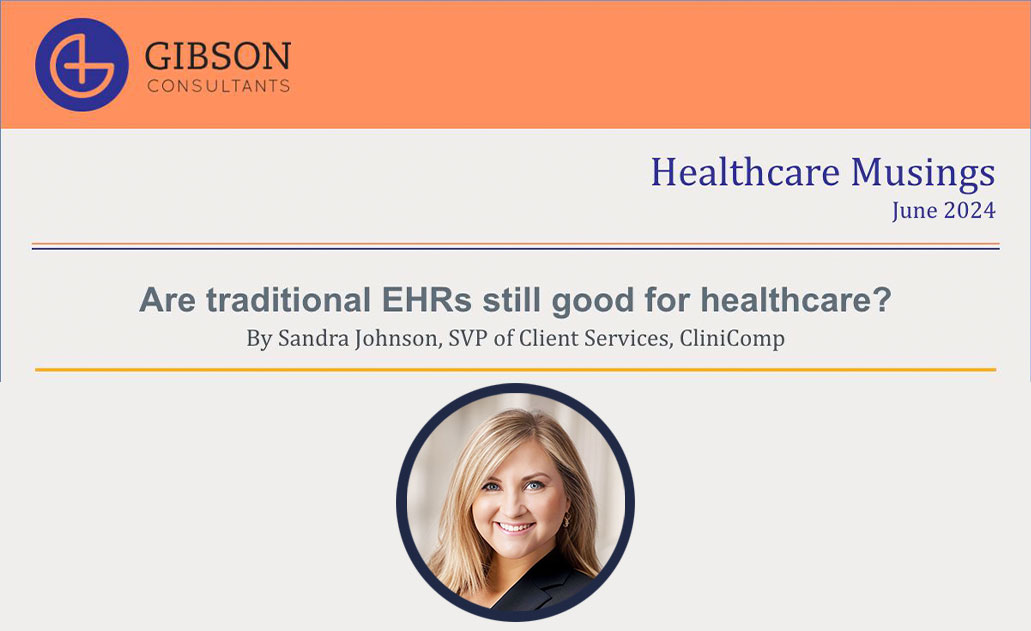June 26th, 2024 / News
Are Traditional EHRs Still Good for Healthcare?

The struggle is real for health systems in the U.S. They need their electronic health record (EHR), a foundational element in the IT ecosystem, yet costs have become oppressive. Digital and IT budgets increased by an average of 18.3% from 2019 to 2023, based on a survey by Healthcare Financial Management Association (HFMA). And one in five surveyed cited increases of more than 30% over that period. Nearly half (46%) cited electronic health record modernization as a top investment priority.
What if health systems could flip these common cost ratios on their heads? With a counter-intuitive approach to how EHRs are typically sold, implemented and managed, health systems of all types and sizes can alleviate IT complexities and lower total cost of ownership. The unconventional System as a Service (SYaaS) subscription model fundamentally changes the game by bundling everything required to manage the EHR, including all hardware, software, implementation, and ongoing support and optimization services, all for a fixed price. This better enables ROI calculations.
Overcoming the common EHR challenges
The common challenges with EHRs related to cost, interoperability, downtime, and the initial learning curve are well known. Add to that, according to a recent KLAS report, one in four healthcare organizations say their vendor does not always keep its promises, especially related to support communication and follow-through, product capabilities – in particular integration, implementation, upgrades, development – and ongoing costs.
With a fundamentally different approach, the SYaaS model unifies incentives to create a seamless, highly tailored implementation process. By digging in to learn the health system’s environment, policies and workflows, the EHR implementation process becomes workflow rather than system driven.
Moreover, innovation for ongoing system optimization is a standard process within the SYaaS model. Instead of paying separately for each new capability, the SYaaS model continually integrates new technological advances with a universal goal of system optimization – from implementing specific workflow efficiencies to applying AI across multiple use cases. For example, a SYaaS EHR vendor rolled out electronic caliber tools for critical care with no downtime or additional costs, eliminating the need to review or measure paper ECG strips and enter that data, such as QRS wave data, manually. Integrating this data from monitoring devices within the EHR saves clinicians time and reduces errors.
Making downtime a thing of the past
Adding to the cost of EHRs is the general acceptance that “downtime events are inevitable and common.” As unplanned downtime tops the news on a daily basis with the rise in cyberattacks, most EHRs also require planned downtime for system maintenance and upgrades.
The SYaaS model built upon a strong underlying system architecture upends these common expectations, making it possible to achieve 100% uptime for maintenance and upgrades as well as unexpected events. For example, in the face of natural disasters, such as a tsunami in Japan and Hurricane Sandy in the Northeast, health systems using a SYaaS-based EHR were able to continue care without interruption. With redundancy that is always ready, business continuity and access to all patient records continues via a backup location, so organizations remain fully operational.
Putting clinicians front and center
Another challenge is that EHR implementations have too-often missed the boat for fully embracing the clinical voice. The result is that EHRs have made the burden of administrative work worse, especially for clinicians. In a Stanford Medicine poll, 71% of physicians reported that EHRs contribute to burnout, and six out of 10 (59%) think EHRs need a complete overhaul.
In contrast, there are EHRs that take a human-centered approach, making clinicians integral to system and workflow design, testing and implementation. This ensures the system meets the needs of clinical users with an intuitive user interface and data that is presented in the most effective and meaningful ways, while making documentation a natural by-product of patient care interactions. Using systems designed with this approach, nurses working with monitored patients report saving as much as 15 to 20 minutes per patient per shift. In another example, medication reconciliation is presented in one simplified, color-coded screen to make the process easy, fast and accurate.
Putting data to work
In the next few years, AI and other advanced technologies that rely on clean electronic data, will further alleviate clinician burden. EHRs must embrace data sharing and interoperability using standards, such as the Fast Healthcare Interoperability Resources (FHIR) Application Programming Interface (API) as a baseline.
With synthesized and normalized data, multi-modal medical AI models that integrate diverse data types including text, images, and more become possible. This paves the way for advanced automation, such as presenting an immediate holistic view of the patient with recommendations for best-practice treatment plans for a specific diagnosis, helping clinicians manage care effectively and efficiently. Predictive analytics can also be employed to monitor patient data in real time and identify patients at risk of sepsis for early intervention. Ultimately, by leveraging the technology to access the data needed to employ AI effectively, the EHR can advance operational efficiencies, increase time savings, and optimize resource allocation – leading to improved health outcomes.
The time has come to shake up traditional EHRs
With rising costs and increasing complexity associated with traditional EHRs, it’s time for the industry to recognize that there is another way. With the SYaaS subscription model, health systems of all types and sizes can eliminate downtime, reduce complexity, and achieve dramatically lower total cost of ownership. Packaging everything required to manage the EHR for a fixed and predictable price simplifies the process and frees organizations to advance innovations that alleviate the burden on clinicians and IT, reduce costs, increase efficiency to improve care and financial outcomes.
About the Author
Sandra Johnson, senior vice president of client services for CliniComp. She is a healthcare IT, systems implementation, and human capital management professional with extensive background in client relations and project management. She has more than two decades of experience specializing in electronic healthcare record implementations and optimization, program and process management, training and development, and workforce planning.
